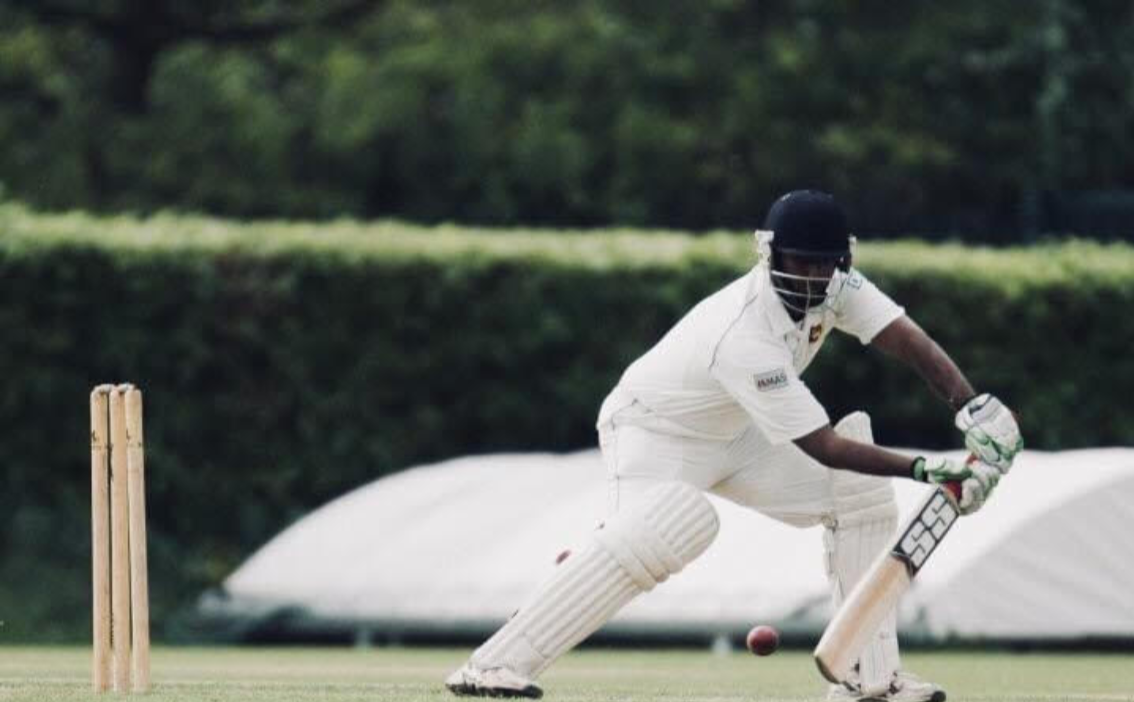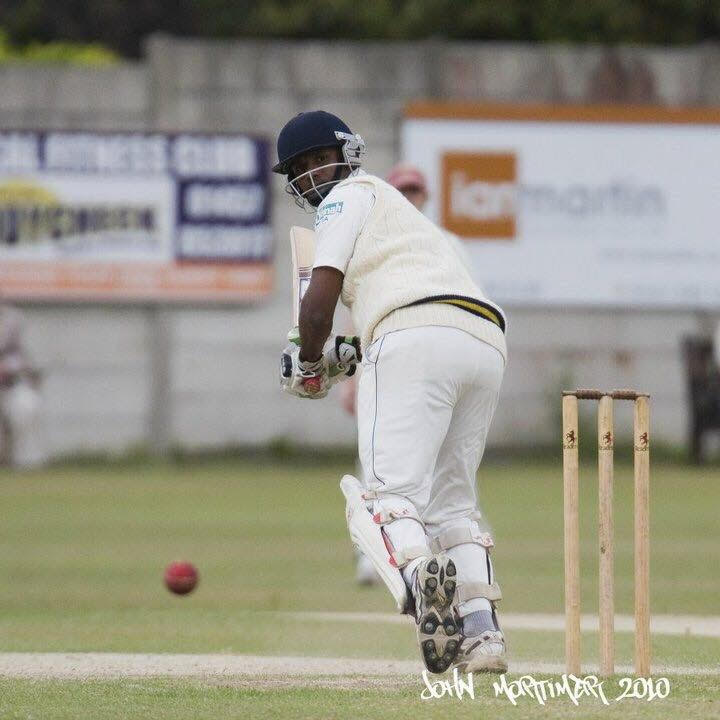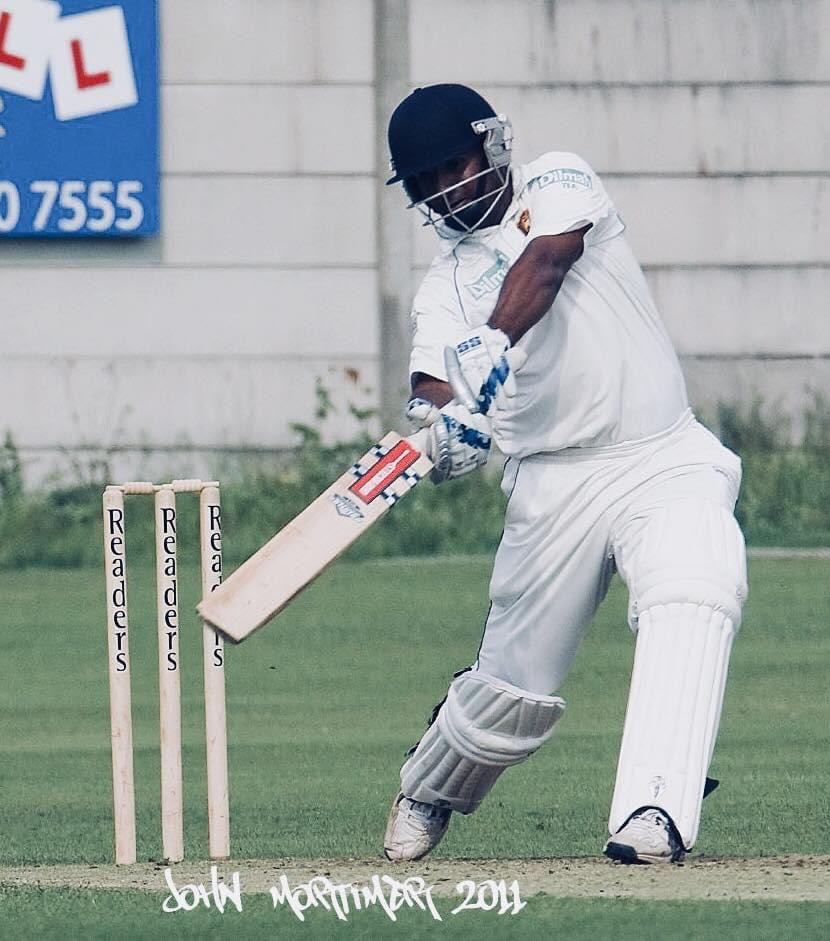Bathiya Perera: One of the best to never play for Sri Lanka
Mitch Bourke | August 21, 2023

Bathiya Perera arrived onto the Sri Lankan first class scene as a young 19 year old leg spinning all rounder. As his career progressed he would mature into a dominant top order batsman scoring 8254 first class runs with a high score of 220 not out. Bathiya put in many dominant performances for Sri Lanka A against world class lineups but could never break into the test side.
Bathiya has since moved to Australia where he had a short stint playing at Berwick, before he spent time as the coach of Upper Beaconsfield and Frankston Peninsula and skills development coach of various junior clubs.
Thanks for giving up your time today Bathiya, let's get started.
Q. What year were you born?
1977
Q. When did you start playing cricket and who for?
I started playing with my grandad when I was about 6, did fun based stuff and then I was also playing on the streets with my friends too. I started playing proper cricket in primary and high school. The school cricket standard was really high.
Q. Tell us a bit about the levels of cricket in Sri Lanka and the stages of making it to first class cricket, is it similar to Australia?
Yes, it is similar to Australia. It’s a bit different at grassroot level because when you’re growing up you only play for your school; you have different age groups from under 11 to under 19’s. From about age 16-24 you play junior club cricket and then progress to play senior club cricket, the senior clubs feed into district and provincial competitions. Senior club competition and the Provincial competition are considered as first class cricket.
Q. Tell us about your journey to first class cricket?
I started off playing on the streets with family and friends. It really kind of took off at school level, I had good coaches and mentors coming through school cricket, played College 1st XI for four years, then moved to club cricket and progressed to first class from then on.
Q. How old were you when you made your first class debut and what was that like?
I was 19 years old, it was a great experience, you can’t replay that feeling. I didn’t know what to expect at that level as I was very young at the time and it took me a while to work out how to survive. When I came into the system it was the year the Sri Lankan national team won the 50 over cricket World Cup, beating Australia in the grand final in Pakistan. It was a great time for Sri Lankan cricket, I was playing alongside Chaminda Vaas and Romesh Kaluwitharana who were part of that World Cup winning team, they had so much international experience and I was experiencing something special.
Q. What advice would you give to a young cricketer that has aspirations of playing first class cricket?
Have fun and keep getting better, you’ve got to keep pushing yourself to fulfill your dreams. It's not easy but with determination and dedication there’s nothing one can’t achieve. If you have a proactive mindset and a good work ethic you can’t go wrong.
Q. When did you make your debut for Sri Lanka A and what was that like?
That was another great feeling. I was playing club cricket in Manchester, UK, the Sri Lanka A team was touring and at the back end of the tour they had a few injuries and the selectors gave me a call and I got invited to join the team. I made my debut against a combined MCC XI. It was a star studded match, there were lots of international players playing like Neil Johnson, Andy Flower, Grant Flower, Alistair Campbell and Joe Dawes to name a few.
Q. When you started playing for Sri Lanka A you were played primarily as a bowler, how’d you make the change to becoming a batsman?
Well yes, I was an all rounder coming through the junior ranks, Opportunities were very hard to come by at that level, you can’t pigeon hole yourself to one particular skill and limit your opportunities. You have to use the opportunities you get, establish yourself and then bring your skills to form, that’s what I did with my batting, I had so much confidence with my batting.
Q. You played a fair bit of cricket with Kumar Sangakkara, what was he like and what made him so good?
He’s a class act. We have a long history together, we played school cricket against each other and we became good friends. We toured together with the Sri Lankan ‘A’ team a few times and played for the same province as well. He was driven by his goals and was always looking to get better, even in his last season playing county cricket, he was dominating and was at his best when he retired, he had a great cricket brain too.
Q. Thilan Samaraweera played 80 tests for Sri Lanka and you played a lot of first class cricket with him in Sri Lanka, seven years ago you also played for Berwick together in the Dandenong District Cricket Association (DDCA), what’s your relationship with him like?
We’re very good mates, we go back a long way, probably 35 plus years, we played school cricket together and he married my sister. I got the opportunity to play for Berwick in 2012/13 and he was wrapping up his international commitments, the next season which was 2013/14 he was keen and decided to join me at Berwick.
Q. What was it like scoring your maiden first class hundred?
It was a great experience, the first half of my career I was batting at number 6 or 7 and it’s hard to make that big score. You can make some really good contributions but you’re always batting with the late order or the tail and can never go big. Later on, I was promoted to number 4 or 5 and I made good use of the opportunities, it’s an unbelievable feeling. I think I was lucky enough to score two in the next two games as well, so I made three in three matches.

Bathiya Perera batting
Q. Tell us a bit about your first class double hundred and what that was like?
It was great, it was a semi final against one of the top teams so a big game. I was on 190 not out at stumps and we were 9 down so I needed the number 11 to hang in there to get those 10 runs. Luckily enough he did, and I think I ended up making 220 not out.
Q. You spent most of your career playing for Moors Sports Club, but you had a two year stint at Colombo before returning to Moors, what was the reason for that?
I started my first class career at the Colombo Colts and played there for three years, I played at Colombo for one year and then I went to Moors for about seven or eight seasons. I wanted a break and something different, so I went back to Colombo. Moors actually got relegated to tier 'B' and in 2010/11 they called me and wanted some experience in the team, so I went back and captained them.
Q. In 2010/11 you captained Moors to the Premier League tier ‘B’ premiership, what was that like?
Our main goal was to get back on to tier ‘A’ cricket and it was great to achieve it. I was performing well but I knew I was going to get limited opportunities at the next level because of my age, everyone I had grown up with, already playing with the national team had played about 6-8 years of international cricket by that time. I evaluated my options, took a lot of time to think about what I wanted to do, I was keen to start coaching and I provided some good expertise, not just as captain but as coach of the team as well. We had a very strong side and I think we won seven out of the eight games outright and won the title pretty comfortably in the end.
Q. You topped the first class run charts in Sri Lanka for two consecutive years and played a fair bit of ‘A’ cricket, do you feel like you deserved an opportunity to play for Sri Lanka?
Yes, it would’ve been a dream come true for me and I think that’s the ambition of any young cricketer playing at the top level. There’s so much you can do, and I did my part with what I had available. I put in consistent red ball performances, but I played in such a strong era, Kumar Sangakkara, Thilan Samaraweera, Mahela Jayawardena and T.M Dilshan. Once they established themselves in the middle order no one would really get a chance to break into that team. I was happy with what I achieved over my career and looking back in hindsight there were some things I should’ve done better, being slightly more proactive with my thinking at times, taking slightly different approaches but I had a good career.
Q. Do you believe you had the ability to perform at international level if you were given an opportunity?
Yes, 100%. I believe I could’ve. I played most touring teams at home in warm up games, I played against a strong Australia team in 2003 and a strong England team in 2004 and performed well against them. On all my ‘A’ tours I averaged 40 to 50 plus, but the national selectors had already moved on to a different player cycle and were focusing on the next group of batsmen coming through. I was unlucky and I could’ve delivered at that level, I had good records at home and away, I did well when I toured to England, South Africa and New Zealand but still couldn’t break through, that’s just how it goes I guess.
Q. You played first class cricket for 16 years, what was the key to your prolonged success?
I always had a drive and wanted to get better, even in my last season I knew my journey was coming to an end but I was still performing and felt I had four or five years left in me when I retired from first class cricket. I had to start thinking about the bigger picture and what I wanted to do in the future. I had to think about my family, I was keen on coaching, I had to end my playing career and focus on the next phase of my life, that’s what you have to do when you have a young family.
Q. Why’d you move to Australia?
My sister had already decided and was working on plans to move, we were a very tight knit family. I wanted to try something different, playing some cricket in Australia was a great option at that time for me and it gave us a chance to look at all the different options we had as a family moving forward. I’ve been playing domestic cricket in Sri Lanka then going to England for their summer, I was playing cricket, non-stop for 15 or 16 years, I needed a break.
Q. In your last season of first class cricket you scored 762 runs @ 50.80 and were third in the runs, why didn’t you pursue a higher level of cricket when you came to Australia?
I was lucky enough to get a gig with Berwick in 2012/13, that winter I had to go to England and finish off my commitments there and see out my contract. I didn’t pursue a higher level of cricket because I had lost my motivation by then, I had played higher level cricket for a long time. I wanted to have fun, enjoy my cricket, take it easy and think about my next move. I think I made the right call.
Q. How does the standard of Sri Lankan first class cricket compare to the Sheffield Shield?
They both feed the national teams. The conditions in both competitions vary and they have different dynamics, if someone from Sri Lanka was to play in Australia they would have to learn how to play on fast, bouncy pitches and if someone from Australia was in Sri Lanka they would have to adapt to the subcontinent conditions and learn to handle quality spin. The Sheffield Shield is a very strong competition compared to other setups around the world. There are only 6 teams, so competition for spots is high and opportunities are very difficult to come by. In other counties around the world, especially the sub-continent where there’s more states or provinces, more opportunities are provided for players to test themselves at an elite level.
Q. What was your favourite format of the game to play and why?
My favourite format was definitely red ball four day cricket, it really tests you as a batter, you need a complete skill set to handle different situations. You have to have not only the physical ability but the mental ability to concentrate for long periods to score big hundreds. It is a real test of character.
Q. Which format do you think suited your batting best?
I think I could’ve done much better in 50 over cricket but we didn’t play much of it. I handled T20 cricket well and it was the most fun.
Q. Who were some of the best bowlers you faced over your career?
I faced a lot of good bowling, some of the best were Muttiah Muralitharan, Lasith Malinga, Nuwan Kulasekara, Chaminda Vaas, Rangana Herath, Andrew Flintoff, Jason Gillespie, Brad Williams, Nanty Heyward, Ian Butler, Chris Martin, Paul Wiseman, Robert Croft, Ashley Giles, Robin Peterson, and Anil Kumble.

Bathiya Perera batting
Q. Who were some of the best batsmen you bowled to over your career?
Again, I bowled to lots of good batsmen, some of the best I bowled to were Mahela Jayawardena, Thilan Samaraweera, Kumar Sangakkara, Andrew Flintoff and Sourav Ganguly.
Q. Can you pick an XI of the best players you’ve played with over your career?
Yes, it's not in batting order but the best XI I’ve played with are:
Chandika Hathurusinghe (26 tests, 35 ODIs. Has also coached the UAE, Bangladesh and Sri Lanka national teams)
Rangana Herath (93 tests, 71 ODIs, 17 T20Is)
Kumar Sangakkara (134 tests, 404 ODIs, 56 T20Is)
Muttiah Muralitharan (133 tests, 350 ODIs, 12 T20Is)
Thilan Samaraweera (81 tests, 53 ODIs)
Chaminda Vaas (111 tests, 322 ODIs, 6 T20Is)
Romesh Kaluwitharana (49 tests, 189 ODIs)
Lasith Malinga (30 tests, 226 ODIs, 86 T20Is)
Nuwan Kulasekara (21 tests, 184 ODIs, 58 T20Is)
Angelo Mathews (86 tests, 217 ODIs, 75 T20Is)
Moeen Ali (60 tests, 102 ODIs, 28 T201s)
Q. What was Muttiah Muralitharan like and how hard was he to face?
Ohh, he was a genius. He spun the ball so much and his main weapon was his accuracy and the ability to bowl very long spells, he became unplayable when he developed his doosra. Luckily, I had him on my side when we played provincial cricket. What a legend.
Q. What was Lasith Malinga like and how hard was he to face?
He was a nightmare to face in the nets when he was young especially with that round arm action. He only had two lengths to focus on, it’s coming at your toe or your head. Haha, it’s that simple. What a champion bowler he turned out to be!
Q. Across your career who were your biggest influencers or mentors?
Definitely my dad and grandad. My grandad played a lot of cricket in his day and my dad was more into rugby but he always supported me and gave me everything I needed, I couldn’t have gone anywhere without those two. There are lots of different coaches and mentors along the way that I must remember and be thankful for all that they’ve done for me during my playing days. I am forever in debt.
Q. Looking back on your career is there anything you’d do differently?
Yes, I could’ve been more proactive with my thinking and maybe should’ve made better use of some of the opportunities I received as a player to push my game to the next level. It’s hard to find faults other than that though, I’m happy with my career, I was playing in a very strong era of Sri Lankan cricket and I am happy to say that I can move on without any regrets.
Q. What is your proudest moment as a cricketer?
Scoring over 8000 runs in first class cricket as a batter, it was definitely a big highlight for me, I think only three people have done that and never played for Sri Lanka and I’m one of them. Another highlight for mine was earning a scholarship to the Australian cricket academy in 1997, back when I was more of a frontline leg spin bowler. Getting coached by Rod Marsh and late Terry Jenner who was the mentor of legendary spin wizard Shane Warne.








